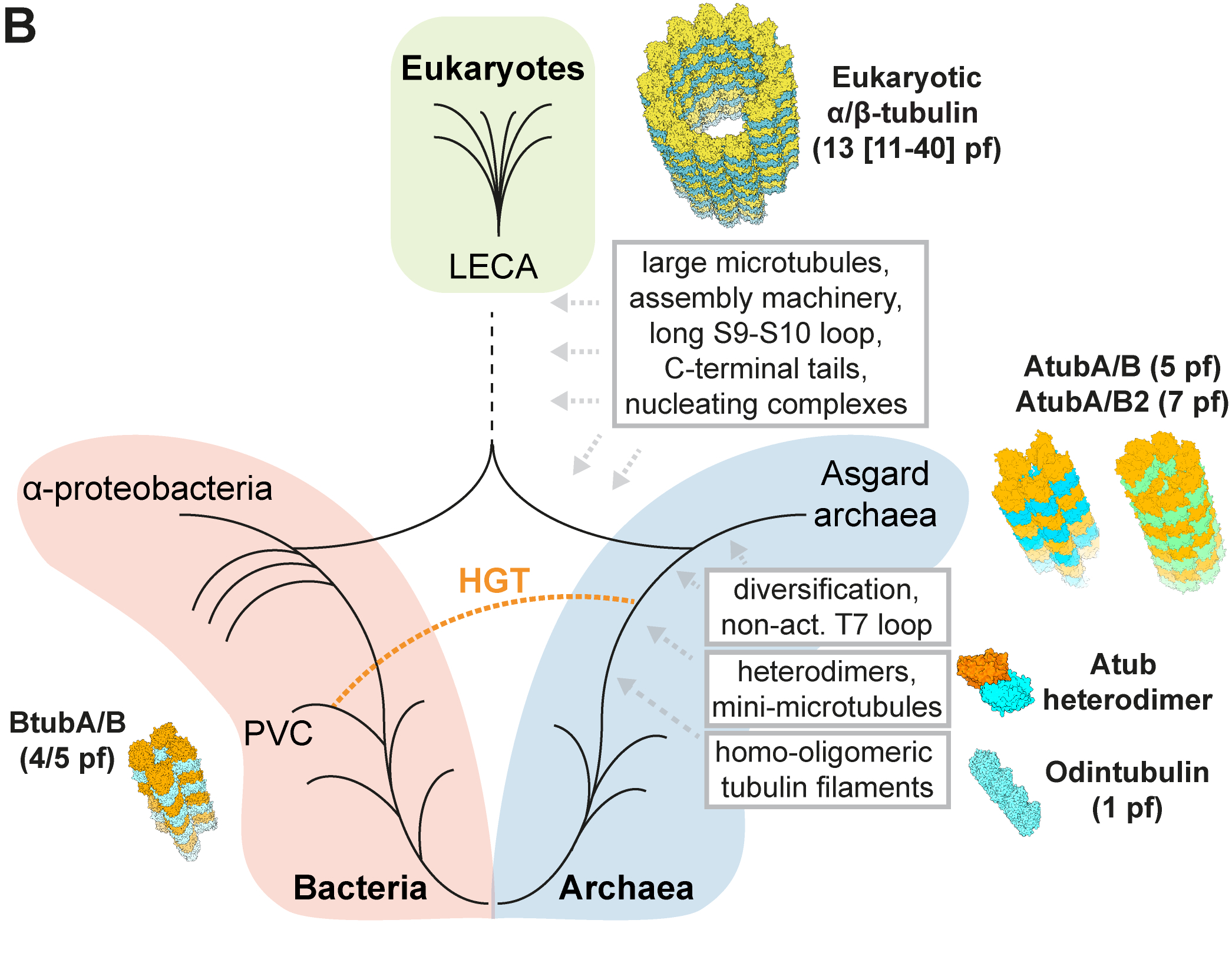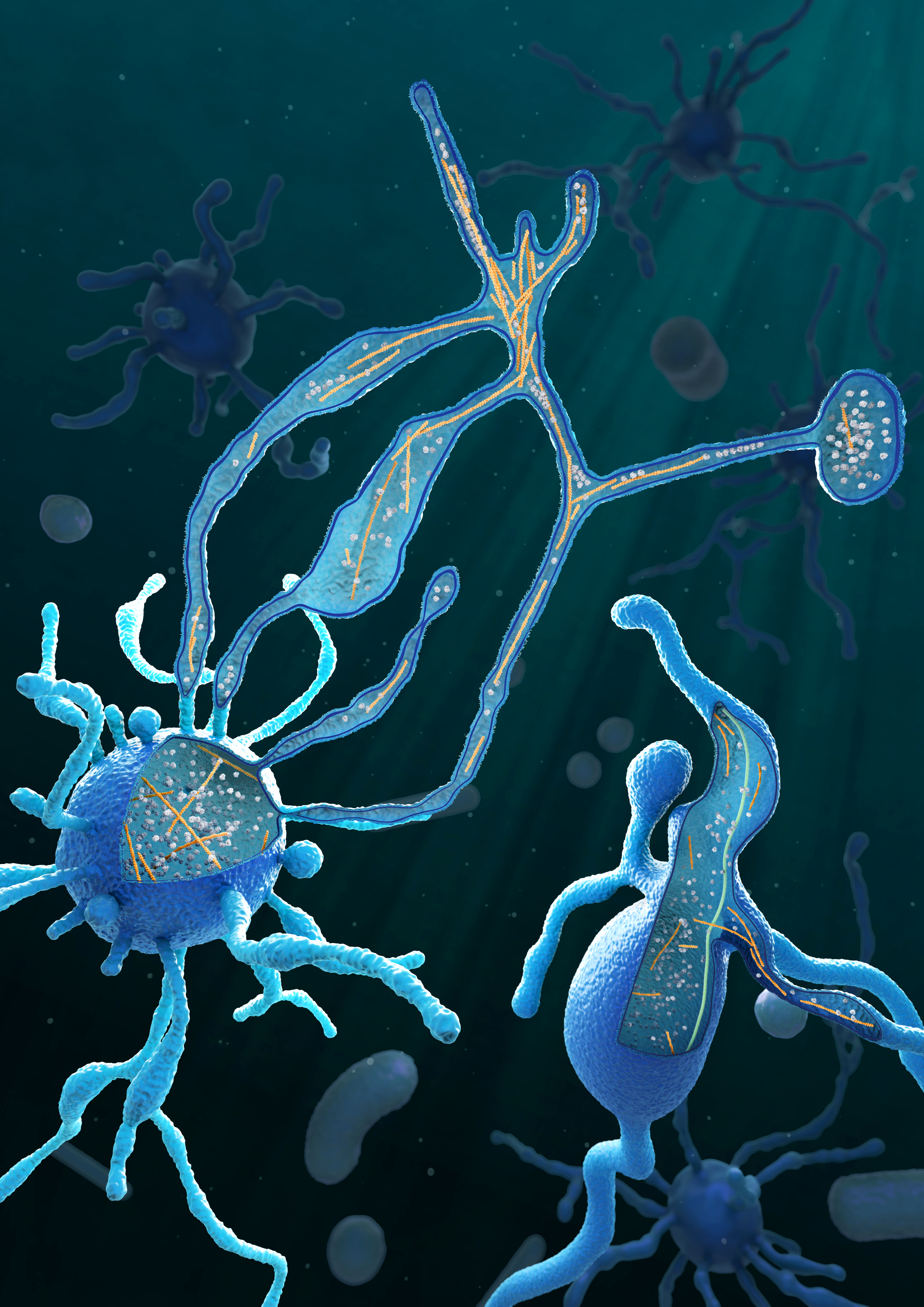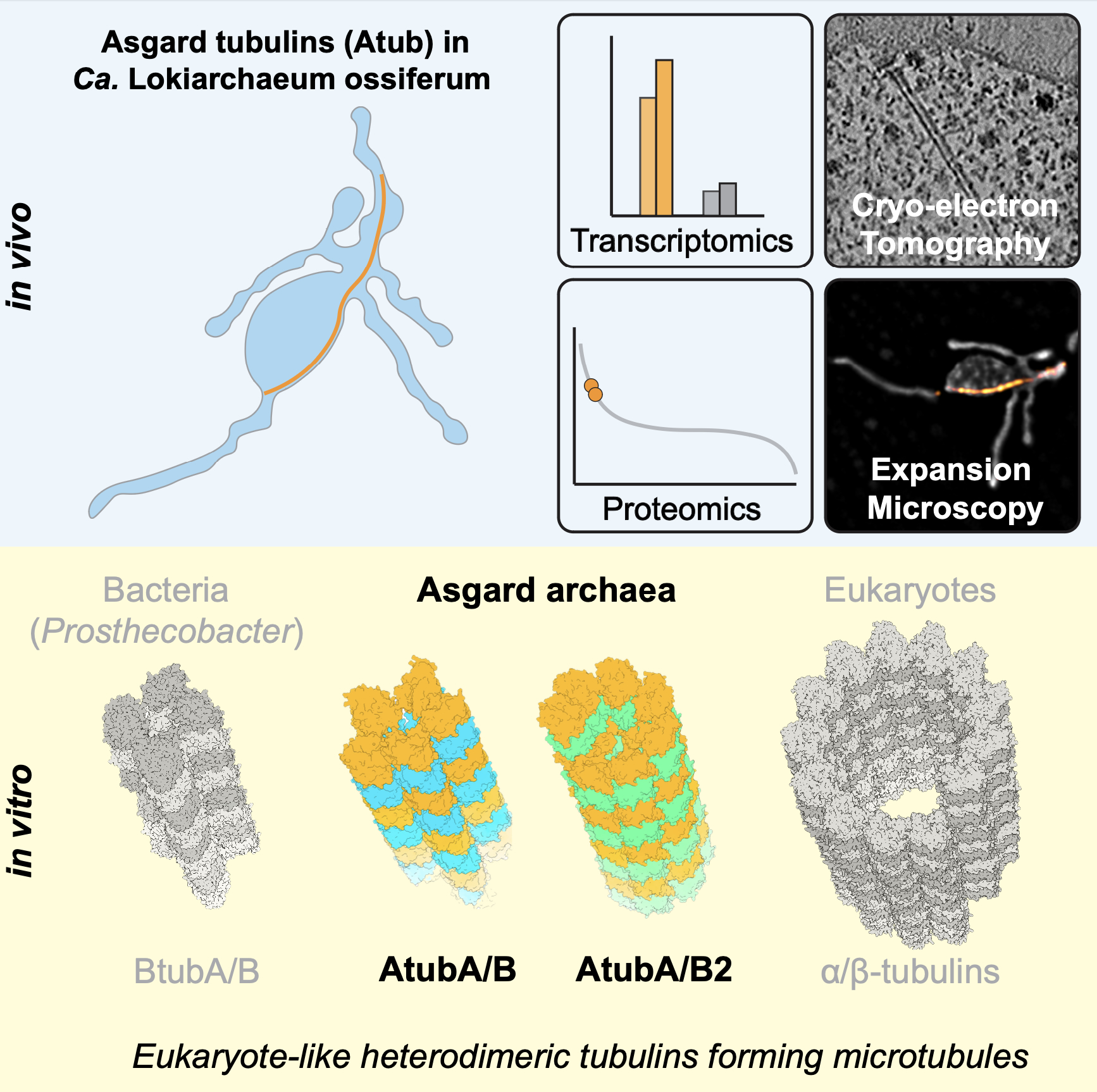Asgard Archaea
Asgard archaea were discovered in 2015 by external page Thijs Ettema and colleagues through the analysis of metagenomic data from sediment samples from Loki’s castle– a formation of hydrothermal deep-sea vents.
Phylogenetic analyses uncovered that Asgards were the closest known relatives of modern eukaryotes, supported by the fact that their genomes also harbor Eukaryotic Signature Proteins. Ancestors of Asgard archaea are therefore considered as a likely "host" that acquired a mitochondrion as a result of a symbiosis with other microbes.

We set out to study Asgard archaea as a proxy to understand the molecular basis of the cellular processes that allowed the acquisition of the proto-mitochondrion. As a first step, we focused on the cell architecture and its underlying cytoskeleton.
Complex cell architecture and actin cytoskeleton
We collaborated with external page Christa Schleper and her lab members, who were able to establish an enriched culture of an Asgard archaeon, which we named Candidatus Lokiarchaeum ossiferum. Despite slow growth and low cell densities, we succeeded in imaging cells by cryoET. We identified Ca. L. ossiferum cells on the basis of characteristic expansion segments of their ribosomes.
Cells exhibited coccoid cell bodies and a network of branched protrusions. The cell envelope consists of a single membrane and complex surface structures. A long-range cytoskeleton extends throughout the cell bodies and into the protrusions. The twisted double-stranded architecture of the filaments and immunostaining indicated that the filaments comprise Lokiactin—one of the most highly conserved Eukaryotic Signature Proteins in Asgard archaea.
We propose that a complex actin-based cytoskeleton predated the emergence of the first eukaryotes and was a crucial feature in the evolution of Asgard archaea by scaffolding elaborate cellular structures that may have played a critical role in the acquisition of the mitochondrion.
Microtubules
Microtubules are a hallmark of eukaryotes. Archaeal and bacterial homologs of tubulins typically form homopolymers and non-tubular superstructures. The origin of heterodimeric tubulins assembling into microtubules remains unclear.
We discovered external page novel tubulins in Asgard archaea. These Asgard tubulins (AtubA/B) are closely related to eukaryotic α/β-tubulins and the enigmatic bacterial tubulins external page BtubA/B. Proteomics of Ca. Lokiarchaeum ossiferum showed that AtubA/B are highly expressed. CryoEM structures demonstrated that AtubA/B form eukaryote-like heterodimers, which assemble into 5-protofilament bona fide microtubules in vitro. CryoET imaging revealed the rare occurrence of tubular structures spanning throughout the cell. Expansion microscopy with Atub-specific antibodies are consistent with this finding and detected cytoskeletal structures only in a subpopulation of cells and only in cells of fast growing cultures.
Our data suggest a pre-eukaryotic origin of microtubules and provide a framework for understanding the fundamental principles of microtubule assembly. Importantly, our study also provides a new perspective on the origin of the enigmatic bacterial tubulins external page BtubA/B and on the relationships of Asgard archaea with bacteria from the Planctomycetes-Chlamydiae-Verrucomicrobia (PVC) superphylum.


